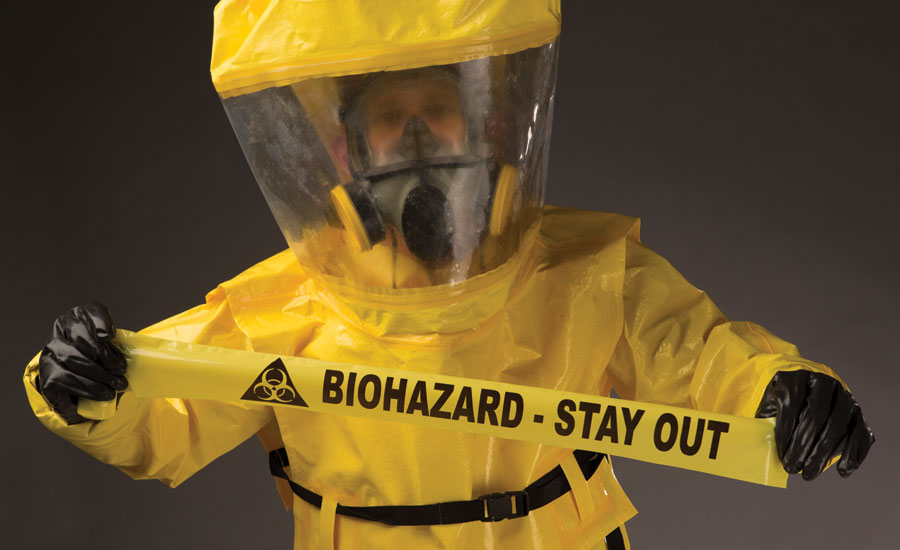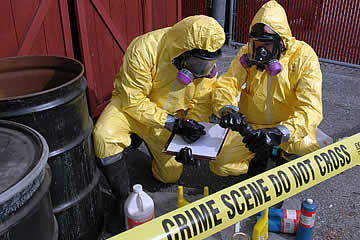Sewage Cleanup Solutions: Rapid and Safe Remediation of Contaminated Locations
Sewage Cleanup Solutions: Rapid and Safe Remediation of Contaminated Locations
Blog Article
Professional Biohazard Cleaning and Purification for Blood, Bodily Fluids, and Hazardous Products
In the realm of biohazard cleansing and decontamination for blood, physical fluids, and unsafe products, accuracy and experience are vital. The prospective wellness dangers connected with direct exposure to biohazards underscore the important need for thorough handling and detailed clean-up. Specialized training equips specialists with the expertise and abilities required to attend to these unsafe situations successfully. However, it is not simply regarding cleansing up; the significance of using appropriate purification techniques can not be overemphasized. As we navigate the elaborate landscape of biohazard cleaning, understanding the subtleties of policies, conformity, and the customized devices at play becomes crucial in ensuring a secure and thorough decontamination procedure.
Wellness Dangers of Biohazard Direct Exposure
Exposure to biohazards poses significant wellness dangers that can cause severe consequences for communities and people alike. Biohazards include a variety of organic substances, consisting of blood, physical fluids, mold and mildew, bacteria, infections, and other potentially contagious materials. When people come into call with these biohazards, whether with crashes, incorrect handling, or environmental direct exposure, they deal with the threat of contracting significant health problems or illness.
Among the key health and wellness dangers connected with biohazard exposure is the transmission of transmittable illness. Bloodborne pathogens such as HIV, liver disease B and C, and various microorganisms can be present in biohazardous products, presenting a direct danger to human health. Breathing in airborne biohazards like mold and mildew spores or entering into call with contaminated surface areas can also result in respiratory system problems, allergic reactions, and other negative health results.
Additionally, biohazard exposure can have lasting health ramifications, with some conditions materializing years after the initial call (Blood Cleanup). As a result, it is crucial to prioritize appropriate biohazard cleaning and purification to mitigate these health dangers and guarantee the safety and security of individuals and neighborhoods

Specialized Educating for Biohazard Clean-up
When it involves handling biohazard cleanup effectively and securely, specialized training plays a basic duty in guaranteeing appropriate decontamination procedures are complied with. Biohazard cleanup requires certain understanding and abilities to properly alleviate dangers connected with bloodborne pathogens, physical liquids, and dangerous materials. Specialists educated in biohazard clean-up undergo strenuous direction on how to safely take care of, eliminate, and get rid of biohazardous materials to protect against contamination and direct exposure.
Specialized training for biohazard cleanup covers a range of crucial topics, including correct personal safety devices (PPE) usage, bloodborne virus understanding, decontamination strategies, and contaminated materials disposal protocols. Individuals educated in biohazard cleanup are outfitted with the needed experience to examine contamination levels, recognize prospective threats, and carry out appropriate cleaning treatments in conformity with regulatory criteria.
Constant training and education and learning are extremely important in the field of biohazard cleaning to stay updated on the most up to date decontamination technologies, safety and security procedures, and laws. By investing in specialized training, biohazard clean-up experts can efficiently react to emergency cleanup circumstances and guard both public health and wellness and the atmosphere.
Relevance of Correct Decontamination Methods
Making use of proper purification techniques is vital in biohazard cleanup to efficiently eliminate unsafe products and minimize wellness dangers. Efficient decontamination not just makes certain the elimination of visible traces of blood, physical fluids, and various other biohazards however also targets unseen pathogens that might posture major health hazards if not appropriately gotten rid of. By following rigid decontamination methods, trained experts can dramatically reduce the threat of exposure to unsafe microbes, viruses, and germs that can bring about diseases or infections.
Proper decontamination strategies include making use of specialized equipment and anti-bacterials that are especially designed to neutralize biohazards successfully. Comprehensive cleaning and sanitation of contaminated areas are important to protect against the spread of pathogens and guarantee a safe atmosphere for owners. Additionally, the appropriate disposal of biohazardous waste complying with purification treatments is important in protecting against contamination of other surface areas or people.

Tools and Tools for Safe Clean-up
When dealing with blood, physical liquids, or unsafe materials, biohazard cleansing specialists rely on specialized gear to reduce direct exposure threats and extensively sanitize the affected area. Furthermore, biohazard cleansing packages having disinfectants, absorptive products, and biohazard bags are made use of to securely get rid of and have of contaminated products.
Advanced cleaning tools like hospital-grade disinfectants, HEPA-filtered vacuums, and fogging makers are utilized to sterilize surfaces and eliminate biohazards efficiently. Specialized devices such as sharps containers and biohazard waste disposal bins are utilized to safely manage sharp items and biohazardous waste materials. By using the best devices and tools, biohazard cleaning professionals can ensure a comprehensive clean-up process that prioritizes safety and reduces health risks for both employees and residents of the affected room.
Rules and Conformity in Biohazard Cleaning
Correct adherence to laws and conformity standards is paramount in biohazard cleansing to make sure the safety of both employees and the environment. Federal government firms such as OSHA (Occupational Security and Health And Wellness Management) and the EPA (Environmental Defense Firm) homicide and suicide cleanup have actually established particular standards for biohazard cleanup treatments to reduce wellness risks and environmental contamination. These laws cover an array of facets including the handling, transport, and disposal of biohazardous products, in addition to the needed training and protective devices needed for personnel associated with the cleanup process.
Biohazard cleansing firms should remain current with these policies to ensure that their procedures meet the needed security criteria. Failure to follow these laws can result in severe repercussions, consisting of penalties, lawsuit, and threatening the wellness of people and the environment. By following rigid guidelines and conformity measures, biohazard cleaning business can properly minimize risks and guarantee a thorough and risk-free clean-up process for all celebrations included.
Final Thought
In verdict, biohazard cleansing and purification call for customized training, correct strategies, and adherence to laws. Direct exposure to blood, physical liquids, and harmful materials positions considerable health risks, making it essential to use the best equipment and tools for safe cleaning. By adhering to stringent procedures and guidelines, professionals can effectively mitigate the threats linked with biohazard direct exposure and guarantee the safety of both themselves and others.
As we browse the detailed landscape of biohazard clean-up, comprehending the nuances of laws, conformity, and the specific equipment at play comes to be imperative in ensuring a safe and detailed decontamination procedure. (Blood Cleanup)
When it comes to managing biohazard clean-up effectively and securely, specialized training plays a basic function in ensuring correct decontamination procedures are adhered to.Using proper purification strategies is critical in biohazard clean-up to efficiently eliminate unsafe materials and minimize health and wellness risks. In addition, biohazard cleaning kits having anti-bacterials, absorbent products, and biohazard bags are used to securely contain and get rid of of infected items.
Federal government firms such as OSHA (Occupational Safety and Wellness Administration) and the EPA (Environmental Security Agency) have actually established certain guidelines for biohazard cleaning procedures to lessen health threats and ecological contamination.
Report this page